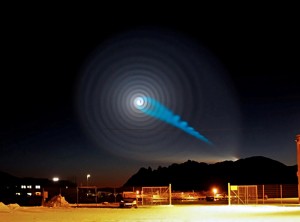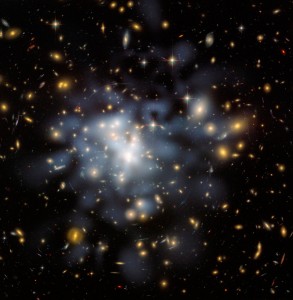 CERN is set to collide particles this May. However, the first particle will be launched by the end of March. The last time CERN reached world record levels, it seemed the universe flipped on its head. President Obama was in Norway receiving his Nobel Peace Prize while a blue vortex appeared in the sky.
CERN is set to collide particles this May. However, the first particle will be launched by the end of March. The last time CERN reached world record levels, it seemed the universe flipped on its head. President Obama was in Norway receiving his Nobel Peace Prize while a blue vortex appeared in the sky.
The Large Hadron Collider collision energy will restart at 13 TeV, a significant increase over the initial three-year LHC run, which began with a collision energy of 7 TeV, rising to 8 TeV.
Over the last 16 months, the LHC has been through a major programme of maintenance and upgrading, along with the rest of CERN’s accelerator complex, some elements of which have been in operation since 1959. Some 10,000 superconducting magnet interconnections were consolidated in order to prepare the LHC machine for running at its design energy.
"The machine is coming out of a long sleep after undergoing an important surgical operation," says Frédérick Bordry, CERN’s Director for Accelerators and Technology. "We are now going to wake it up very carefully and go through many tests before colliding beams again early next year. The objective for 2015 is to run the physics programme at 13 TeV."
“We will be moving into unexplored territory. Certainly we have far less of an idea what we might find compared with our first run, when we knew there was a good chance we would find the Higgs. This time we expect to uncover new physics, though we do have some goals. For a start, one of our main tasks will be to try to prove if a hypothesis called supersymmetry is true or not.”
 Supersymmetry predicts that versions of the particles that make up normal matter possess mirror or supersymmetrical versions. Thus there could be supersymmetrical quarks – or squarks – out there. Or supersymmetrical electrons – selectrons. “The trouble is that supersymmetry predicts that these entities exist but doesn’t say at what energies we might find them,” adds Charlton.
Supersymmetry predicts that versions of the particles that make up normal matter possess mirror or supersymmetrical versions. Thus there could be supersymmetrical quarks – or squarks – out there. Or supersymmetrical electrons – selectrons. “The trouble is that supersymmetry predicts that these entities exist but doesn’t say at what energies we might find them,” adds Charlton.
Nevertheless, Cern physicists believe supersymmetrical particles could lie within the range of the energetic collisions that will be generated in the upgraded LHC. And if they do detect these strange entities, they could provide the solution to one of the universe’s greatest mysteries: the nature of dark matter.
Dark matter is believed to pervade the cosmos, giving galaxies far greater masses than could be supplied by the “normal” matter of protons, neutrons and electrons. Its existence is only inferred, however, for despite decades of effort, scientists have yet to observe a single unit of dark matter. The new LHC could change that.
“The main candidate to explain dark matter is the Wimp – which stands for weakly interacting massive particle,” adds Charlton. “And it may turn out that Wimps are types of supersymmetrical particles that we will be able to make in the LHC. We will see lots and lots of events in our detectors, of course, and will have to disentangle what is going on. However, if we see collisions with missing energy in them – a sign that we might have created a supersymmetrical or dark matter particle that has carried away that energy – then that would suggest we are on to something.”




